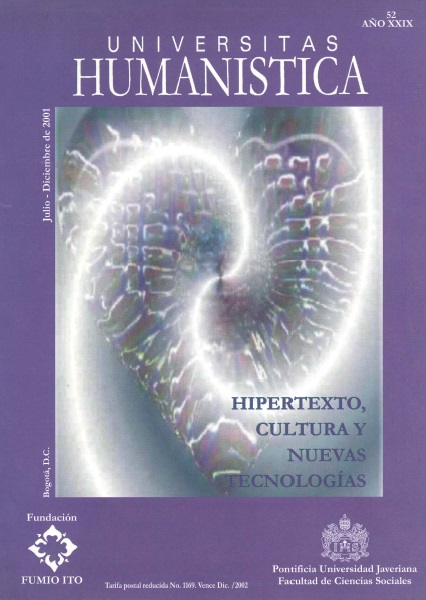Abstract
Este artículo es la elaboración de un análisis desde la perspectiva estructuralista, a tres versiones del mito de Dionisio. Es un ejercicio que no busca considerar los mitos en extensión sino en cuanto a sus estructuras subyacentes. Para este fin se tomo como referencia uno de los primeros análisis estructurales elaborado por Claude Lévi -Strauss, sobre el clásico mito de la Gesta de Asdiwal, donde se destacaron esquemas constitutivos espacio-temporales y cosmológicos entre otros.
A través de un examen de esquemas polares, se establecieron las categorías binarias que estructuran tres versiones del mito (Clásica, Orfica y Tracia), y se realizaron fórmulas canónicas para reforzar el análisis y recrear la coherencia de la construcción mítica.
Posteriormente se compararon los esquemas de las tres versiones para encontrar una relación estructural.
El análisis encontró una construcción estructural subyacente muy elaborada, donde la versión Tracia se constituye como una síntesis de las otras dos versiones. El objetivo de este ensayo es demostrar la presencia de estructuras subyacentes (polares y canónicas) y compararlas estructuralmente, lo cual contribuye a reforzar el estudio de la complejidad mitológica. No es pretensión de este trabajo agotar las múltiples posibilidades de interpretación ya que son posibles muchos otros ejercicios de análisis estructural.
This journal provides immediate open access to its content on the principle that making research freely available to the public, encourages greater global exchange of knowledge.
The journal Universitas Humanística is registered under a Creative Commons Attribution 4.0 International Public License. Thus, this work may be reproduced, distributed, and publicly shared in digital format, as long as the names of the authors and Pontificia Universidad Javeriana are acknowledged. Others are allowed to quote, adapt, transform, auto-archive, republish, and create based on this material, for any purpose (even commercial ones), provided the authorship is duly acknowledged, a link to the original work is provided, and it is specified if changes have been made. Pontificia Universidad Javeriana does not hold the rights of published works and the authors are solely responsible for the contents of their works; they keep the moral, intellectual, privacy, and publicity rights.
Approving the intervention of the work (review, copy-editing, translation, layout) and the following outreach, are granted through an use license and not through an assignment of rights. This means the journal and Pontificia Universidad Javeriana cannot be held responsible for any ethical malpractice by the authors. As a consequence of the protection granted by the use license, the journal is not required to publish recantations or modify information already published, unless the errata stems from the editorial management process. Publishing contents in this journal does not generate royalties for contributors.


